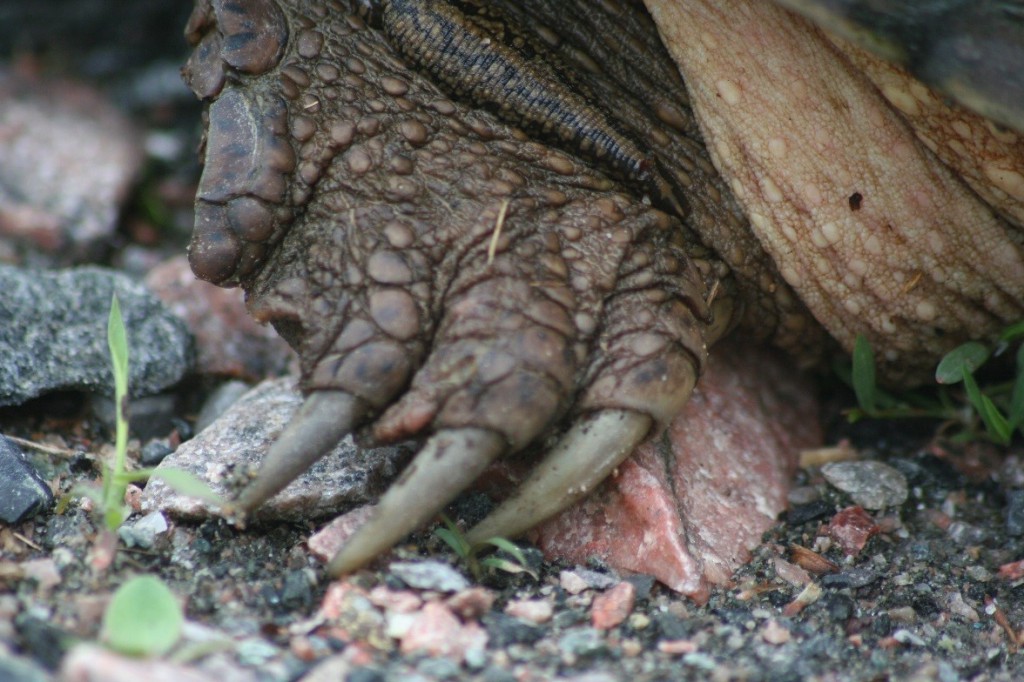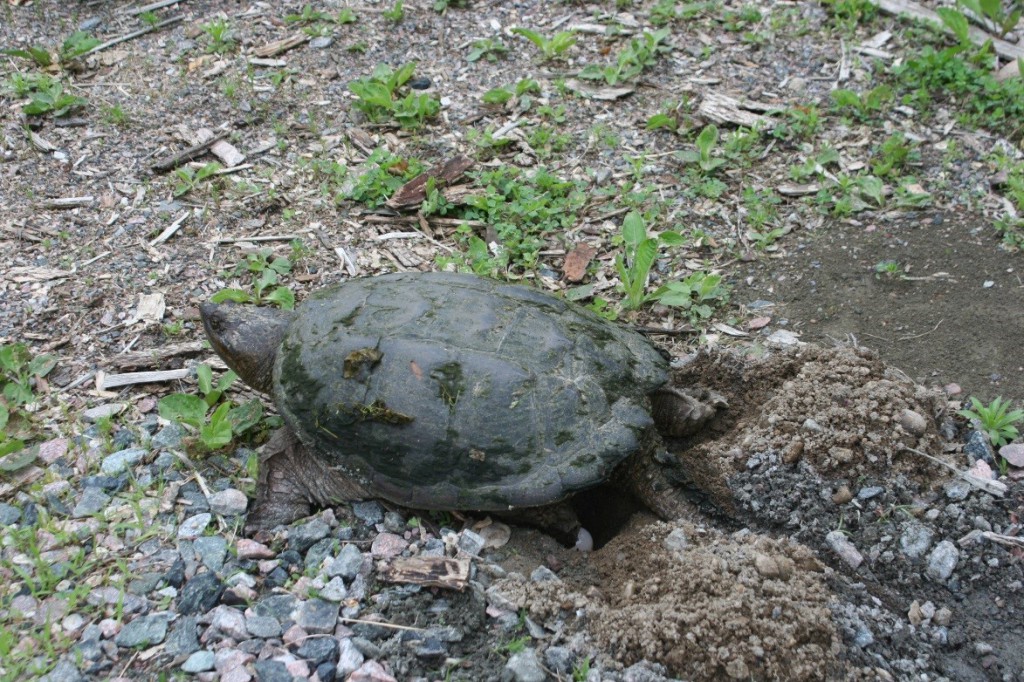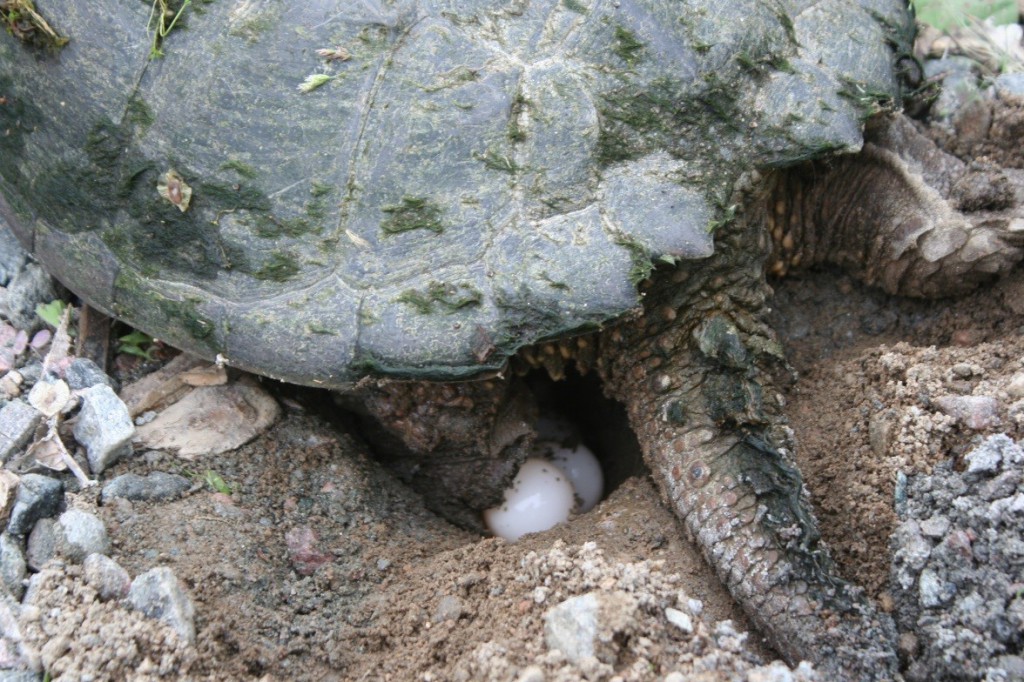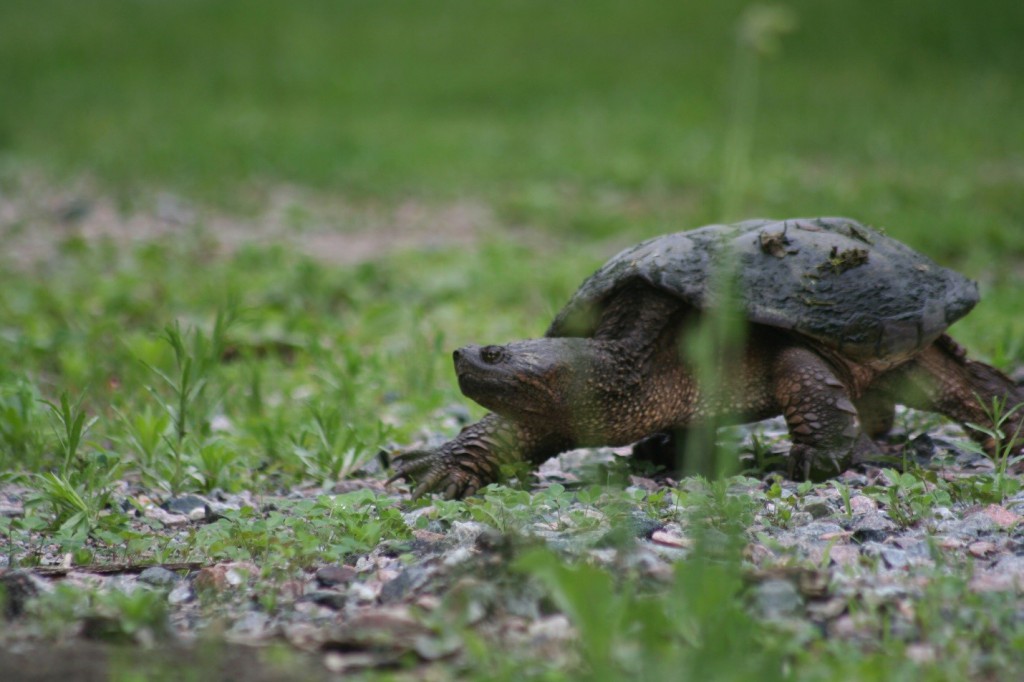The special annual event that we look forward to in anticipation happened this year on June 11. We arrived home from a walk to find our old friend, Mama Snapping Turtle, on the laneway. We knew what was going to happen next. She moved slowly and steadily toward our woodpile. Next to the wood pile, she stopped and began to dig at the surface with her hind legs. She didn’t stay long at that place, however, before moving further along, where the soil was less compacted.
 She then got to the work of digging her nest. If you have ever watched a dog dig a hole, this is the antithesis. While a dog digs with its front paws, balancing its weight on its hind legs, a turtle balances on its front legs while the hind legs push dirt away in turns. Dogs typically dig with rapid pawing action; turtles dig slowly and deliberately. A Mama Snapper’s hind legs are equipped for digging, with large claws on wide feet.
She then got to the work of digging her nest. If you have ever watched a dog dig a hole, this is the antithesis. While a dog digs with its front paws, balancing its weight on its hind legs, a turtle balances on its front legs while the hind legs push dirt away in turns. Dogs typically dig with rapid pawing action; turtles dig slowly and deliberately. A Mama Snapper’s hind legs are equipped for digging, with large claws on wide feet.

I watched her lay her eggs, each a glossy white, perhaps the size of a pecan. I heard one clink as it landed against another egg in the nest. I wondered what the climatic conditions had in store for these particular eggs. Like many turtle species, Snapping Turtles have temperature-dependent sex determination. Eggs incubated at warmer temperatures produce high proportion of females and eggs incubated at cooler temperatures produce high proportion of males. Some scientist predict warming global temperatures will increase the risk of extinction for turtle species, as most of the eggs in a warmer environment will produce female turtles.

Just as dusk was settling, we saw her heading downhill, toward the pond. She moved with slow and steady determination. One front foot went forward, then the opposite hind foot, then the other front, and opposite rear. Every step was made with purpose. She seemed to epitomize mindfulness.

Curious to see how she would get to the pond, I followed her from a respectful distance. She moved along the laneway, turned left, then crossed the hedgerow, and again headed toward the pond. At the tall border of canary grass, she turned and began walking alongside the grass. I wondered if the tall grass was too much of a barrier and if she would walk all the way to the point, where no canary grass grows at the shoreline. But then she turned and pushed slowly through the grass. Once at the shore, she slipped into the water and walked a meter out before stopping and burying herself into the mud at the bottom of the pond. She seemed to be preparing herself for a long rest after a hard day’s labour.
We will keep watch over the nest and, in 80-90 days, we hope to see a toonie-sized hole in the soil, indicating that the hatchlings successfully dug themselves out to follow the scent of water to the pond. Last year I was lucky enough to see a hatchling on its way to the pond. It was a miniature version of its mother, already looking ancient and wise.


1 comment
Hello Carolyn,
I was curious to know at what age (shell size) do Snapping turtles start to lay eggs? We see a lot of Snapping and Red eared turtles near our home in Bromont, Quebec. And have some photos to share if you wish. We have seen a snapping with a 14″ diameter shell and a baby that had a 1 1/2″ diameter shell!
Thank you for sharing this story with us and happy turtle watching,
Helen and daughter Eva